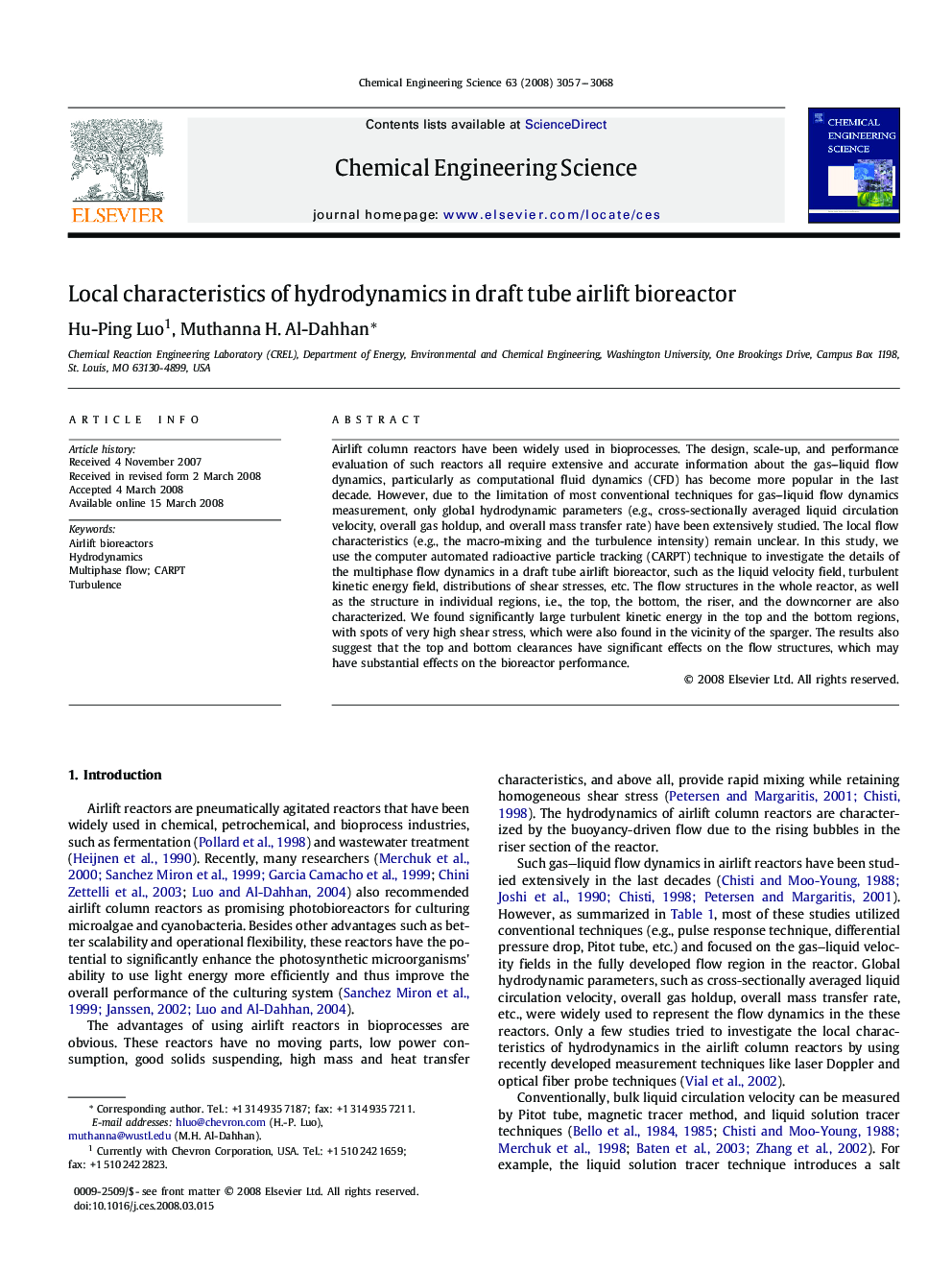| Article ID | Journal | Published Year | Pages | File Type |
|---|---|---|---|---|
| 158216 | Chemical Engineering Science | 2008 | 12 Pages |
Airlift column reactors have been widely used in bioprocesses. The design, scale-up, and performance evaluation of such reactors all require extensive and accurate information about the gas–liquid flow dynamics, particularly as computational fluid dynamics (CFD) has become more popular in the last decade. However, due to the limitation of most conventional techniques for gas–liquid flow dynamics measurement, only global hydrodynamic parameters (e.g., cross-sectionally averaged liquid circulation velocity, overall gas holdup, and overall mass transfer rate) have been extensively studied. The local flow characteristics (e.g., the macro-mixing and the turbulence intensity) remain unclear. In this study, we use the computer automated radioactive particle tracking (CARPT) technique to investigate the details of the multiphase flow dynamics in a draft tube airlift bioreactor, such as the liquid velocity field, turbulent kinetic energy field, distributions of shear stresses, etc. The flow structures in the whole reactor, as well as the structure in individual regions, i.e., the top, the bottom, the riser, and the downcorner are also characterized. We found significantly large turbulent kinetic energy in the top and the bottom regions, with spots of very high shear stress, which were also found in the vicinity of the sparger. The results also suggest that the top and bottom clearances have significant effects on the flow structures, which may have substantial effects on the bioreactor performance.
